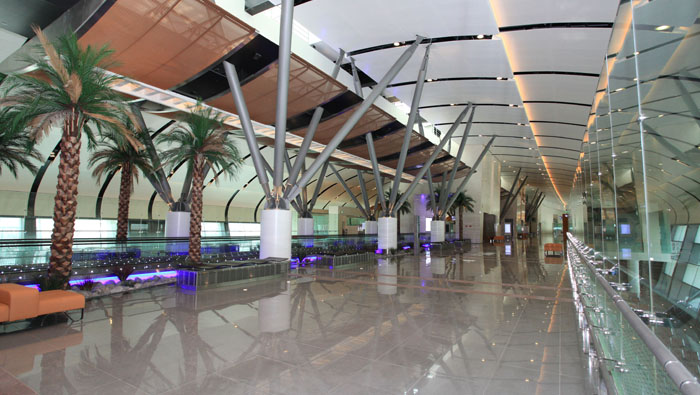
Muscat: The operational cost of the Muscat International Airport has risen by 169.7 per cent since operations were moved to the new terminal, but this is normal, according to the CEO of the Oman Airports Group.
Mustafa Al Hinai told the Times of Oman, “While moving to the new airport, expenses rose by 169.7 per cent in May due to increase in airport facilities. The effect is normal, especially after moving from a small building of 60,000 square metres to the 360,000-square metre area the airport is situated in now.”
The group’s ambition is to place Muscat International Airport among the top 20 in the world by the year 2020. “While we still face a few challenges due to the airport being new, we will overcome them in the next few months,” said Al Hinai.
As part of that objective, the national carrier would receive two new aircraft this month, one, a Boeing 737, would arrive today and the other, a Boeing 787-9 Dreamliner, would come on June 28. Regarding the new destinations of Oman Air, the veteran executive explained that Casablanca would be a new hub connecting Europe and Africa when they launch the destination next July.
“The aim of this destination is that Morocco will be a connectivity point between Africa and Europe for the carrier.”
“After restructuring the business operations unit, upgrading the efficiency of the airports, spending control and increasing revenues will strengthen the status of Oman airport and make it an economic zone capable of enabling the tourism sector and logistics and work in an integrated environment,” he said.
The new passenger terminal covers a total area of 580,000 square metres and is equipped with the latest technology and state-of-the-art facilities.
The new terminal has been designed with security and safety at its core, using state-of-the-art biometric smart technology to track any unauthorised access or inconsistencies.
The traffic flow is much easier as the airport authorities have segregated arrivals and departures.
“The boarding bridges also cut down the time spent on travelling and movements,” said passengers.
Another striking feature is that the Muscat International Airport is a “silent airport”, ensuring passengers rely more on digital display boards for information about their flights.